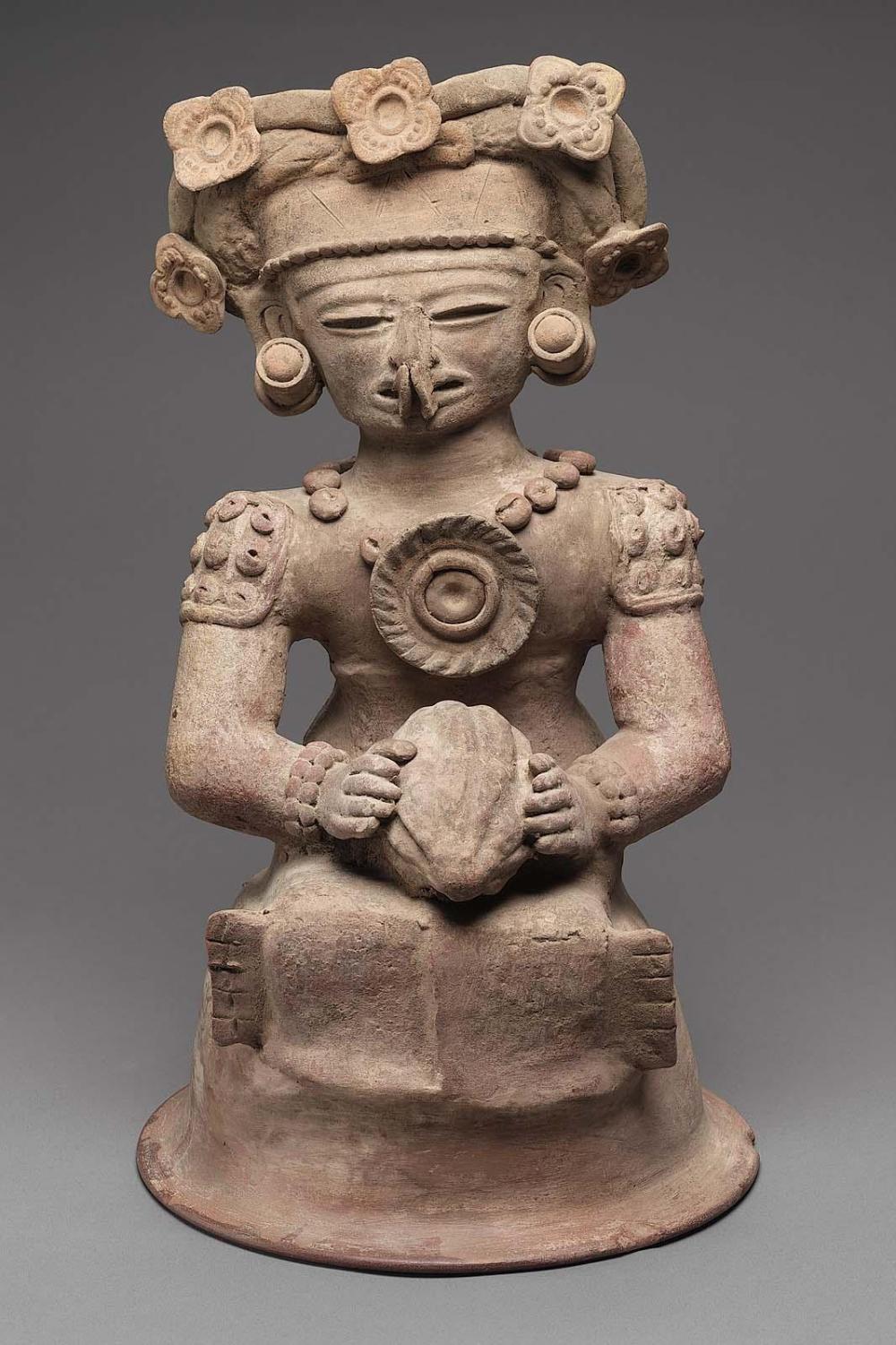Advanced Search
Human effigy incense burner top
Maya
Late Classic Period
A.D. 400–550
Object Place: Department of Tiquisate, Guatemala
Medium/Technique
Earthenware: traces of specular hematite (red), white and black slip paint
Dimensions
43.2 x 24.7 cm (17 x 9 3/4 in.)
Credit Line
Gift of Landon T. Clay
Accession Number1988.1227a
CollectionsAmericas
ClassificationsCeramics – Pottery – Earthenware
Cacao was both currency, and a prestigious gift. Here, the goddess of cacao holds a ripe pod. Cacao flowers adorn her hair, and a feathered divining mirror hangs on her chest
DescriptionHuman effigy top of a two-part incense burner rendered in Tiquisate-Teotihuacán style. The seated figure holds a cacao pod in her/his hands, which rest on her/his lap. The figure wears a pectoral in the form of a typical Teotihuacán-style feathered mirror, and the headdress is embellished with typical Teotihuacán-style flowers. Body adornments include cylindrical earspools, and strings of beads around the neck, wrists, and attached to rectangular elements (cloth patches?) on the upper arm-lower shoulder areas. The piece was broken in ancient times, and modern restoration of the clay sculpture is noted on the base, torso, left wrist and neck areas. The nose has been reattached.
ProvenanceBetween about 1974 and 1981, probably purchased in Guatemala by John B. Fulling (b. 1924 – d. 2005), The Art Collectors of November, Inc., Pompano Beach, FL; May 20, 1987, sold by John B. Fulling to Landon T. Clay, Boston; 1988, year-end gift of Landon Clay to the MFA. (Accession Date: January 25, 1989)
NOTE: This is one in a group of Maya artifacts (MFA accession nos. 1988.1169 – 1988.1299) known as the “November Collection” after John Fulling’s company, the Art Collectors of November, Inc. John Fulling sold this group of objects to MFA donor Landon Clay in 1987, and they were given to the Museum the following year.
Evidence suggests that John Fulling built the November Collection from sources in Guatemala between 1974 and 1981. Only a portion of what he acquired during this time came to the MFA in 1988. It is not possible to determine precisely which objects were acquired when or from whom.
NOTE: This is one in a group of Maya artifacts (MFA accession nos. 1988.1169 – 1988.1299) known as the “November Collection” after John Fulling’s company, the Art Collectors of November, Inc. John Fulling sold this group of objects to MFA donor Landon Clay in 1987, and they were given to the Museum the following year.
Evidence suggests that John Fulling built the November Collection from sources in Guatemala between 1974 and 1981. Only a portion of what he acquired during this time came to the MFA in 1988. It is not possible to determine precisely which objects were acquired when or from whom.




